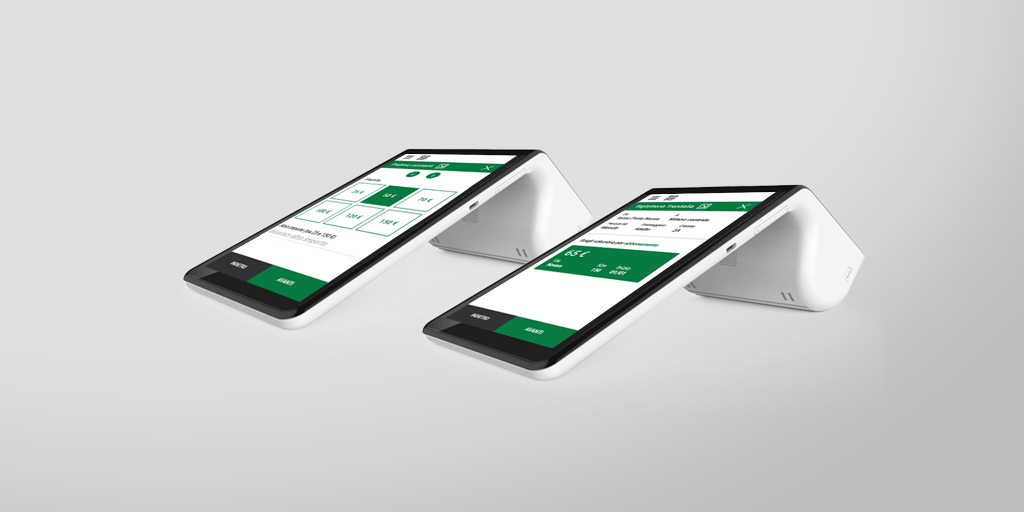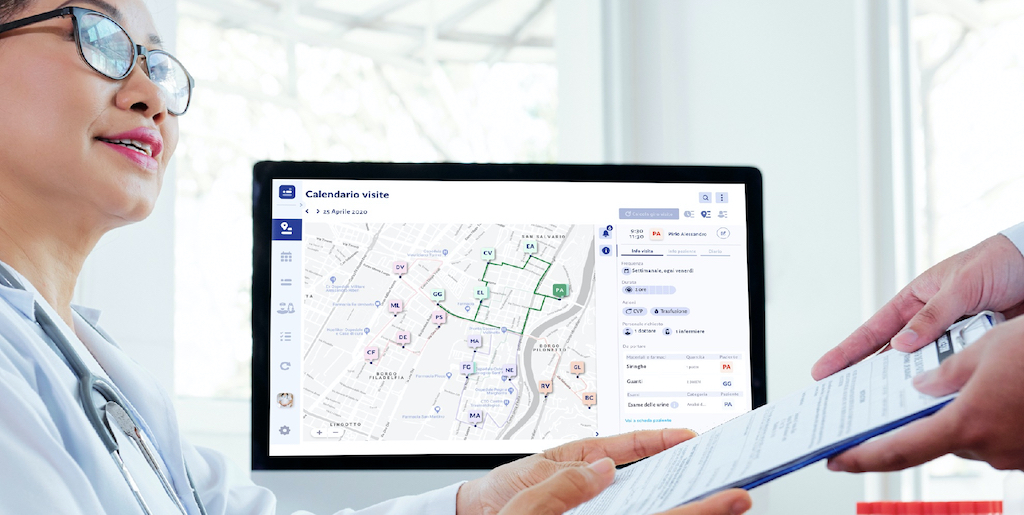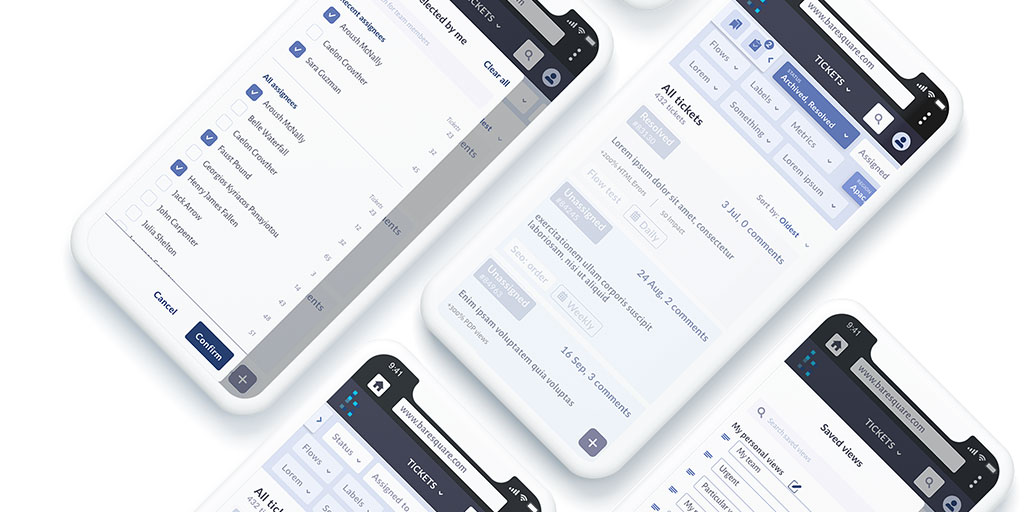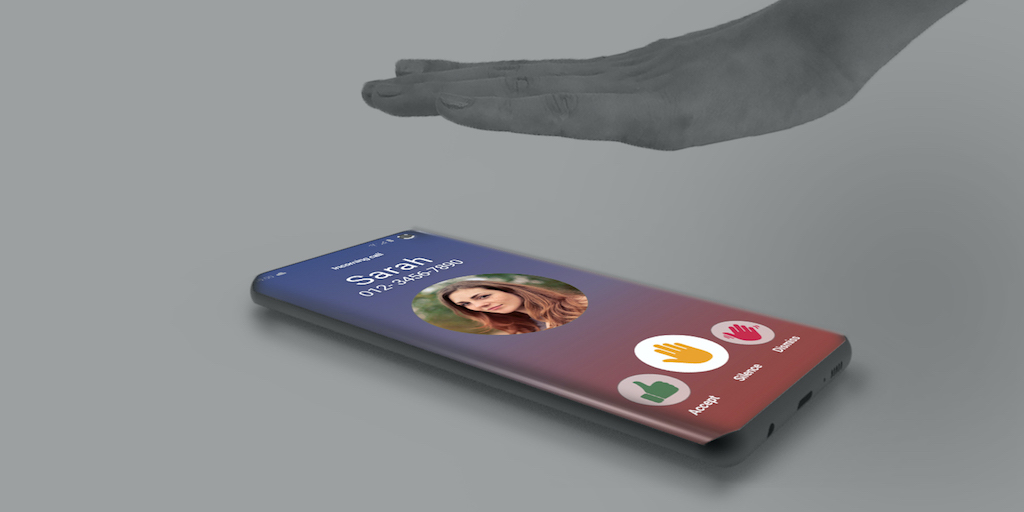Banca 5, a new branchless bank model

Banca5, a new branchless bank model Intesa Sanpaolo bank Share Experientia conducted an analysis of everyday transactions in the tobacconist’s shop, and defined interfaces and processes for a new Point of Service (POS). 3 things to know When digital banking is not sufficient The main problem that big banks have today is to allow non-digital customers (by age, education, internet access, …) to easily access the simplest banking services. Taking the branch out of the branch The aim of the project was to facilitate interaction with a manager outside the context of a branch. To do so, the main features of the banking network (sense of trust and protection, problem-solving capacity) need to be kept outside the bank. A non-invasive solution In parallel, we proposed a solution to the tobacconist network that is easy to learn and use, able to reduce the time of individual operations, and minimize the error ratio. In this way, the solution was accepted by the network and was immediately used. Gallery In depth Service mix: Information architecture Ethnography Context In the last ten years, about a third of bank branches in Italy have been closed. Banks have leveraged the new opportunities provided by technology, but for some sections of the population or in special cases computers and smartphones are not enough. Banca5 was created on the initiative of Intesa Sanpaolo to meet all customers who need to interact with a person to carry out simple operations (such as payments): distributed over a network of about 15,000 tobacconists, it allows the bank’s customers to carry out operations without going to the branch. Tobacconist shops in Italy do not only provide tobacco products in various forms, but also public transport tickets, lottery products, mobile phone top-ups, utilities bill payments, and stationery. In some cases they also have a bar. Challenge In 2019, Banca5 planned to upgrade POS terminals with screen and keyboard to an Android SmartPOS model the size of a phone. To make the transition effective, Experientia was involved as interaction design experts in the research and definition of the new user experience. We conducted a research on Banca5’s existing devices and analyzed the use routines of tobacconists, in order to highlight painpoints and requirements, also compared to the terminals of the competition (Lottomatica and Sisal). Research The observations at the tobacconist shop were functional to redefine the terminal’s UX (flow and information architecture) and to intercept aspects of the tobacconist’s experience. It allowed us to define priorities and needs useful for pursuing the Bank’s strategic objectives. Design TWe supported Banca5 in the complete redesign of the new device : the project was conducted in three iterations of prototyping and testing (all in Agile), in order to verify the solution with users as it was implemented. Impact The new terminal was launched in mid-2019 and was quickly adopted by some 2,000 tobacconists: intensive work and testing allowed POS interactions to be effectively transferred to a five-inch screen, minimizing error-rate and further speeding up the way tobacconists work. Related projects All Services Behavioral design Research and assessment Strategy Consumer technologyFinance BancoSmart, an award-winning ATM Finance CSA: sentiment-based decision support platform for crypto-currency trading FinanceHealth XME Salute: integrating insurance offerings with wellness and health practices Go back to our portfolio
GoCare: Interactive dashboard for a better home hospitalization service

GoCare: Interactive dashboard for a better home hospitalization service CANP European Research Project Share In the context of the European research project CaNP* (“Casa Nel Parco”), Experientia conducted qualitative interviews, shadowing activities and participatory workshops to identify weaknesses and opportunities to improve the home hospitalization service of Molinette di Torino. Based on this research, the GoCare interactive dashboard was designed and validated. (* application 320-12 with co-financing of POR FESR Piemonte 2014-2020) 3 things to know Easier and faster visit management GoCare helps healthcare professionals to significantly reduce time spent on planning the schedule of visits, by analyzing and cross-referencing the relevant data – including patient priority and complexity, geolocation, and the healthcare staff’s shift. Improved communication between stakeholders Communication between caregivers and medical staff is facilitated through simultaneous access to a shared information center with visit schedules and patient monitoring. Data driven decision making The platform provides digital assistance and data to make daily decisions, just a click away. Gallery In depth Service mix: Prototyping Information architecture Participatory design Service design User experience testing Ethnography Context In the context of the European research project CaNP (“Casa Nel Parco”), Experientia conducted qualitative interviews, shadowing activities and participatory workshops to identify weaknesses and opportunities to improve the home hospitalization service of Molinette di Torino. Based on this research, the GoCare interactive dashboard was designed and validated. The prototype facilitates the planning of healthcare staff visits to patients’ homes, improves communication between staff, patients, and healthcare professionals, and manages contingencies, and better use of resources. The GoCare prototype of the CANP European research project (Question 320-12) was created thanks to the co-financing of the POR FESR Piemonte 2014-2020. It was implemented in the context of the Piedmont FESR 2014/2020 Regional Operational Program, in particular the “Health and Wellness” Technological Platform. functional technologies for the implementation of s3 strategies (Call Code: I.1b.2.2) Challenge Home hospitalization services offer an alternative to traditional hospitalization for patients in the acute phase of the disease. Active in Piedmont, since 1985 at AO CSST, it is dedicated to patients with geriatric and metabolic bone diseases. Experientia has designed a digital platform with the aim of facilitating the planning of visits by healthcare professionals to patients’ homes, improving communication between staff, patients and healthcare professionals, optimizing the management of contingencies and the use of resources. Research Experientia conducted interviews and analysis of the tasks within the OAD of Molinette and Cresla of Novara. The interviews provided useful details and requirements. Case studies on the best practices of similar services on a global scale, digital platforms, information structure and visual design were also researched. Critical points and opportunities emerged from the analysis. Design The conception phase subsequently allowed to develop a concept of a digital platform. This concept was designed, starting from the analysis and evaluation of activity flows, user paths and the creation of a detailed service model. Starting from the hi-fi wireframe screen design of the digital platform, the Experientia team created a design system and a visual reference (visual UI) and developed a click-through prototype, iterating based on the initial feedback received from the experts. Impact A study conducted by the University of Turin estimated that, if the platform were implemented in the current OAD department of the Molinette hospital, healthcare personnel would save up to 90-120 minutes a day used today to plan daily visits and 180 minutes per day today used to update paper documents. Related projects All Services Behavioral design Research and assessment Strategy Health Rare disease patient journey mapping HealthSocial innovation Singapore: a city for people aging gracefully FinanceHealth XME Salute: integrating insurance offerings with wellness and health practices Go back to our portfolio
Collaboration UI, redesigning the filter navigation experience

Collaboration UI, redesigning the filter navigation experience Baresquare Share Baresquare asked Experientia to identify the pain points of the current filtering experience of the Collaboration UI platform and to design an improved user interface. We investigated the current solution, deliver an interactive prototype and design specifications that offer optimized filter navigation experience. 3 things to know Co-desiging with the client on Miro boards Experientia carried out co-design workshop activities using remote visualization and collaboration tools. Co-design activities were managed using Miro boards and group video-calls, with stakeholders from different locations. Understanding multiple use cases and scenarios UI collaborations vary greatly depending on the context. The design team identified and developed solutions adaptable and scalable to variable use cases and future scenarios. Providing specific requirements We organized design specifications in Adobe XD, illustrating specific requirements for how the design should be executed. This includes dimensions, interaction patterns, ergonomic factors, aesthetic details (colors, fonts, and measurements of selected elements) and information (flows, behaviors and functionality). Gallery Stakeholder interviews Co-design Miro board Desk wireframes Hi-fi Prototype screens Design system In depth Service mix: Prototyping Information architecture Participatory design Context Baresquare is an International AI and data analytics company that developed Collaboration UI, an application enabling companies to multiply the efficiency of their teams and driving meaningful change in their business performance. Baresquare asked Experientia to identify the pain points in the UX of the Collaboration UI platform and to design an improved user interface that ensures an efficient, seamless, and pleasant interaction with the application. Challenge During the first 2 month “Sprint”, we worked with Baresquare to investigate the current solution via user interviews and a framing workshop, identified filter navigation best practices, and analyzed the competitor’s market. This allowed us to deliver an interactive prototype and design specifications that offered optimized filter navigation experience. In the second “Sprint” we focused on the redesign of the detailed ticket page and developed a new design system for desk and mobile app, providing clear direction and design specifications for an optimized color palette, typography, icon set, and main interactive components. Research Experientia conducted an in-depth analysis of the use of filters within the “collaboration UI” application. The analysis of the AS IS started with guided navigation tours, an heuristic review of the current UX/UI design according to Nielsen’s heuristics and interviews with tool users and stakeholders, to identify pain points and design opportunities. Fieldwork results and customer journey maps identified emerging themes ranging from platform usage, clients perspective, future vision and design opportunities. Based on these key findings, Experientia developed some alternative concepts and discussed these solutions during the remote framing workshop. Design Experientia iterated the selected concept and designed the look&feel of the user interface. We created a clickable prototype with an appealing visual design in Adobe XD. With the same tool we also provided specific requirements for how the design should be executed and created design specifications for the dev team of Baresquare. Related projects All Services Behavioral design Research and assessment Strategy B2B Reinventing customer and supplier interactions for a multinational flooring company B2B AR tools for industrial maintenance B2B Driving digital transformation one touch at a time Go back to our portfolio
Buttonless: engaging users in interactions with keyless devices

Buttonless: engaging users in interactions with keyless devices Samsung Share As we inch closer to phones with all-screen designs, physical buttons are on the chopping block. But how do you interact with a smartphone that has no buttons? Samsung asked Experientia to develop two navigation frameworks for a concept device. 3 things to know A new language Through extensive research, benchmarking, and the organization of a workshop with industry experts (incl. cognitive psychologists and UX specialists), a new language of interacting with a buttonless device was constructed, focusing not merely on isolated substitutes. From the workshop, two design challenges were identified and subsequently developed. The path to keyless strategy The strategy is based on analyzing the dynamic relationship between the user and the device, understanding that the device’s position significantly influences interaction (Edward T. Hall, ‘Proxemic’, 1968). By tracking user location and device handling, the device and its AI can anticipate user expectations and respond intelligently to various usage conditions. UX, UI and usability test The development of a functional physical prototype for a specific interaction was instrumental in augmenting the persuasiveness and efficacy of our design proposition. Moreover, Experientia conducted a usability test involving seven participants whose demographic characteristics aligned with potential international users of forthcoming Samsung flagship devices. This assessment centered on evaluating key aspects of the developed UX framework, thereby providing valuable insights into its usability and effectiveness. Gallery Benchmark Competitor Assessment Concept development Test User Test In depth Service mix: Envisioning Prototyping Information architecture User experience testing Useful links: Wired article External link Context Samsung, one of the world’s renowned communication companies, turned to Experientia to craft a tailored UX framework for the development of buttonless mobile solutions, encompassing both lateral and non-lateral interfaces. Challenge The task for Experientia was to cultivate a distinct language of interaction between users and their devices, fostering a seamless and intuitive user experience. Research The research process aimed to create user-centric UX navigation frameworks for buttonless devices. It started with market benchmarking and heuristic evaluations of alternative interaction methods, then an expert workshop identified key issues. Framework ideation led to tailored proposals, prototyped for validation. Design User testing gathered valuable insights, including changes in device handling under different conditions, universal gesture commands, and strategies for preventing user errors. This thorough research process informed the creation of user-centric UX navigation frameworks, ensuring a seamless and effective user experience. Impact The results of the project, center on establishing a symbiotic language between the device and the user. This language encompasses specific gestures and interaction cues designed to facilitate a seamless and harmonious collaboration between the user and the device, ultimately enhancing the overall user experience. Wired article External link Related projects All Services Behavioral design Research and assessment Strategy Brand UXConsumer technology European car aesthetics: Unveiling preferences and values Brand UXConsumer technology Mobile Privacy UX Consumer technology Customer experience insights to innovation Go back to our portfolio

